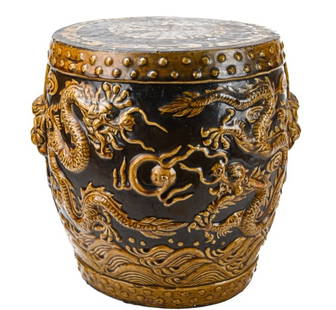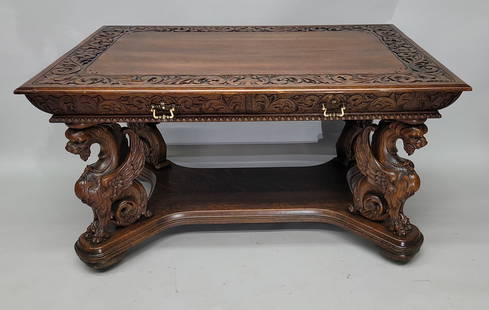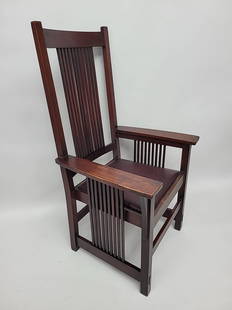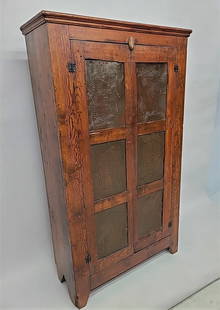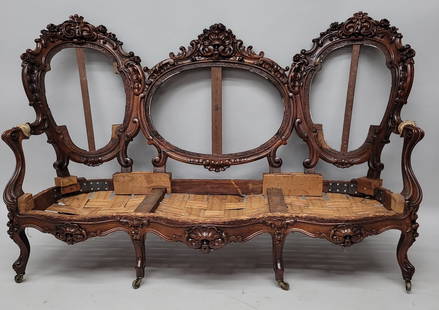

 Discovery- InteriorsBonhamsSponsored.Your ad here?
Discovery- InteriorsBonhamsSponsored.Your ad here?



Discovery- Interiors
Bonhams
Sponsored.Your ad here?


 Discovery- InteriorsBonhamsSponsored.Your ad here?
Discovery- InteriorsBonhamsSponsored.Your ad here?



Discovery- Interiors
Bonhams
Sponsored.Your ad here?

NO RESERVE - AN ANTIQUE CARNELIAN INTAGLIO FOB SEAL PENDANT, 18TH CENTURY in yellow gold, set with
Similar Sale History
View More Items in Benches & StoolsRelated Benches & Stools
More Items in Benches & Stools
View MoreRecommended Furniture
View More



Item Details
Description
NO RESERVE - AN ANTIQUE CARNELIAN INTAGLIO FOB SEAL PENDANT, 18TH CENTURY in yellow gold, set with an oval piece of carnelian engraved with the Clarke family coat of arms, the body decorated with scrolling designs, no assay marks, 3.2cm, 8.2g. Catalogue Note: The arms are those of the Clarke family. They are identified as the arms of Dr Richard Clarke of Enfield, who married a lady from the Meymott family. From their marriage, no male heirs were produced and their fortune and estate were inherited by their two daughters, who acted as co-heirs. The Clarke ancestry was derived over 800 years ago, and has been used by families across the globe in nations including the USA and Ireland. Due to this ambiguity and frequency of the name, the right to bear these arms has been taken by families and individuals who may have a questionable right to do so. The seal in this lot likely corresponds to those of Richard Clark (1739-1831), the Chamberlain, or Lord Mayor of London in 1784, upon his marriage to Anne Braithwaite (1739-1817) in 1767. Sketches and paintings of Richard Clark, including one conducted by Thomas Lawrence, can be found displayed in the National Portrait Gallery. The Crompton-Stansfield Collection: A family legacy through jewellery For thousands of years, jewellery has always played an essential part of commemoration and sentimentality of monumental events, especially within important and titled families. This collection, from a prominent British family, is no exception, containing excellent examples of commemorative and mourning jewels, from the small and intimate to the important and elegant. Descended from the Compton family, these jewels have been passed down through several generations and have been exceedingly well preserved and cared for, with many of them from the 18th century. The Crompton family name can be traced back to Rev John Compton who settled in Derbyshire during the reign of Charles I. A prominent British family with many notable members, many of whom during their lives became renowned leaders in their respective professions, the Cromptons count a justice of the Court of Queen's Bench (Sir Charles John Crompton) and several MPs (William Brookes Crompton Stansfield Sir Samuel Crompton, 1st Baronet) amongst their ranks. Branches of family have inhabited many estates across the midlands and north of England including Chorley hall, Esholt Hall, Stafford Priory, Stone Abbey, Hilcot and the Barrowby estate (by marriage) and have always played an essential part in the lives of their local communities. One such descendent, Samuel Crompton, was elected as Mayor of Derby in 1758 and 1767 and made high-sheriff of the county in 1768. This tradition was continued by his second son John, who served as Mayor of Derby five times between 1772 and 1826. The branch of the family in question involves the fusion of Crompton and another prominent family, the Stansfields of Esholt Hall. The Stansfield ancestry descends from one of the Companions-in-arms of William the Conqueror. Whilst their ancestral home, Stansfield Hall in Todmorden, no longer stands, many family members have occupied homes such as Azerly Hall (Robert Edward Compton) and Moreby Hall (Maria Anne Compton). The marriage of Joshua Crompton and Anna Maria Rookes brought together these two prominent families, with their first son and heir, William Rookes Crompton (Whig MP for Huddersfield 1837-1853) adopting the family arms and name Stansfield (Crompton-Stansfield) upon inheriting the Stansfield estate (Esholt Hall) from his mother. We have taken the liberty of re-creating the ancestral tree of the family members in question to help create a visual representation of this intimate ancestral connection. Esholt Hall was built on the site of Esholt priory by Sir Walter Claverly and was acquired along with the estate by Robert Stansfield in 1755. From then on, Esholt remained in the family until 1904, when it was sold. This collection of sentimental jewellery has been held by the original family since the 18th century, many of which commemorate intimate family moments such as birthdays (lot 10), deaths (lots 14, 37, 39, 40 and 41) or marriages (lot 3), as well as containing private correspondence to further cement their provenance, almost unprecedented for jewels of this age and delicate nature. Any one of these pieces offers a unique opportunity to both own a piece of British tradition and history. As many of these seals contain arms unique to personal marriages and many extinct branches of the family, this collection offers a rare opportunity to acquire examples of heraldry that may never come up again. Elmwood’s is delighted to have the opportunity to offer such a collection, on the market for the first time since its creation.
Buyer's Premium
- 34.8%
NO RESERVE - AN ANTIQUE CARNELIAN INTAGLIO FOB SEAL PENDANT, 18TH CENTURY in yellow gold, set with
Estimate £100 - £150
6 bidders are watching this item.
Shipping & Pickup Options
Item located in London, London, ukSee Policy for Shipping
Payment

TOP






















